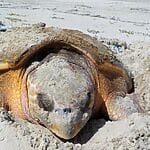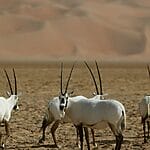Every living creature in this world, including us humans, comes from an ancestor who brought us to live in a specific way. Humans, as well as many mammals, carry babies in a womb – usually that of the female – but there are many other animals that lay eggs.

In this article, we have many animals that reproduce in such a way, along with some fun facts and details about their reproductive, egg-laying process.
Check out the list below!
10 Animals That Lay Eggs
1. Birds
Birds are the most vibrant and enthralling of all animals, and they are related to the dinosaurs, which are the oldest family of reptiles.
They comprise the only proven species on the planet to have feathers, a feature that makes them an extremely recognizable natural formation.
Moreover, because of the scaly look of their feet, these living creatures are thought to be the closest descendant or relative of reptiles.
Even though they are not as big as dinosaurs were in size, the biggest bird alive today is the ostrich of North Africa, which can grow to be 9 feet tall and weigh as much as 350 pounds!
As for their eggs, depending on the size of each bird they will be respectively big or small, with the egg of an ostrich being the biggest in size of all!
2. Ants
Ants consume a wide range of foods and can reside just about everywhere. The majority of them are opportunistic feeders, while there are some that rely entirely on nectar and tree sap for their nourishment.
All ant colonies have at least one queen with her being the only one that lays eggs, with the majority of the eggs laid by her being hatched into the female workers.
The workers, on the other hand, are highly skillful. Several devote their time to caring for the larva and the eggs, some go scavenging for food, while others protect their communal homes.
The queen, however, lays her eggs at certain times every year, with the newborns becoming the heirs to the throne of females.
3. Bees
Bees consume nectar and pollen, and they reside in wax hives which they make from the honeycomb cells that surround their nesting sites.
The queen bee lays her eggs within these cells, in which her kids are nurtured by workers till they develop and become adult bees. Then they can pollinate flowers and contribute to the nourishment of the hive like the rest of the workers do.
The number of eggs a queen will lay varies according to the bee species. When trying to establish her kingdom, a queen will lay somewhere around 2,000 and 3,000 eggs a day, while during her reign she can reach a total of 500,000 eggs.
And if you thought this was the most surprising fact, here’s another one: there are some queens that can even decide the gender of their offspring before it is born, while other queens might even eat their eggs not long after they lay them!
4. Chickens
The eternal question of whether the chicken made the egg or the egg the chicken is one that will remain unanswered, but what it tells us is that chickens do lay eggs.
In fact, the majority of chickens lay eggs once they reach around five months of age, but smaller breeds reach maturity quicker than larger ones and might even start producing eggs earlier in time.
Chickens lay their eggs in nests they have created in a location where no other creatures can see them or harm them.

5. Duck-Billed Platypus
This intriguing animal, with its distinctive duck-like bill, lives in Tasmania and Australia. Its body has a very simple yet special structure that helps them move adeptly.
Its body has a very simple yet special structure that helps them move adeptly underwater, which is also where they spend the majority of its time.
You might have also heard about the platypus’ attacks; yet, despite its capacity to harm smaller animals, it cannot kill humans, so don’t be afraid of them.
Moreover, this creature feeds on small sea creatures and employs their extremely sensing snouts to find them, and frequently move along the rivers’ bottom, digging through the soil in search of food.
Once they reach two years of age, these creatures start mating and frequently get a number of partners throughout their existence. When the females are ready to lay their eggs, they retreat to an isolated shelter to give birth, with 1-3 eggs being the standard.
6. Sea Turtles
Sea turtles always go back to their birthplace, which is some seaside close or far away from their waters, to lay their eggs.
Once they get there, they start digging down into the sand to create space for them, so that their little babies can hatch, rise to the surface, and head towards the sea.
The egg-laying typically takes place when the weather is warmer, which is usually late in the summer. However, the leatherback turtle is the only one who prefers doing so in the wintertime.
Depending on the species, female sea turtles lay anything from 50 to 200 eggs in their egg cavities!
7. Clownfish
Before Nemo became that beloved fish in one of the best animated films, he was an egg, and you might remember seeing it at the beginning of the film.
A clownfish lays its eggs in a variety of ways, but the most common method is broadcast spawning, which occurs when the mating clownfish releases their sperm and eggs together in a nest on a coral from which the currents will assist in dispersing them.
This makes it possible for fertilization to occur outside of the body, while another method for external fertilization is that in which females lay their eggs (see also: Monotremes And Marsupials, Do They Lay Eggs?)on a plain rock exterior near their host anemone, and male clownfish swim over the eggs to fertilize them.
The number of eggs female clownfish lay varies and it can be anything from 100 and 1500 eggs, which entirely depends on their maturity.
Female clownfish lay between 100 and 1500 eggs, and the number of eggs each one lays depends on their maturity.
Spawning tends to happen near the full moon, presumably because that is when there is a high tide that can assist with keeping away the predatory fish that could eat the hatchlings.
8. Crocodiles

Crocodiles lay a large number of eggs, although not all of them hatch as there are many predatory animals, like raccoons, that feed on the eggs.
The nesting period can range in duration from anything from a few weeks to half a year, while there are several females that have been witnessed building trial nesting sites, believing they are pregnant. Nevertheless, if fertilization is not finished, they leave those nests.
What is surprising to some is that crocodiles do not lay their egg underwater. They do, even so, lay their eggs in proximity to water bodies. Certain crocodile species start digging wallows to eventually fill them with water and stay the eggs in the nest next to them have dried.
Once a crocodile lays its eggs, they are unable to transfer the eggs to some other spot, which means that the eggs must be placed in an ideal place that is both warm and shielded from predatory animals.
9. Sharks
Sharks typically reach sexual maturity when they reach 12-15 years of age. Furthermore, most sharks exhibit comparable procreative conduct in that they use internal fertilization.
Male sharks discharge sperm inside the female sharks to fertilize eggs, with only one or two eggs being fertilized at a time, resulting in slow population expansion and restoration.
However, sharks’ reproductive practices vary in that certain species give birth to live babies, with such sharks being called viviparous.
Other sharks, on the other hand, lay eggs and are classified as oviparous, and they account for 40% of all sharks living on our planet and seas.
10. Bed Bugs
Not something anyone wants to hear, and probably a piece of information you’d rather not know, but we ought to tell you that bed bugs also lay eggs!
While these creatures do not spend their time on our beds, they do lay their eggs there. They consume blood and sustain themselves by relying on it, be it ours or that of animals.
Therefore, since their food is where people are – as we are their food – they prefer to build their nest in the same spot to save time from traveling.
However, don’t think that it’s any easier to find those nests, as they are well-hidden in the stitching or linings of mattresses, bed linen, and soft furnishings.
The Bottom Line
These x animals and species are only some examples of the plethora of animals in the world that lay eggs from which their babies come out and grow up.
However, as with all newborns in nature and the wilderness, the dangers are great and there are many predators that make the egg-laying process one with many risks.
- 12 Interesting Animals in Dominican Republic - 2024-05-02
- 8 Common Dangerous Animals in Yosemite - 2024-05-01
- 11 Interesting Animals in the Midwest - 2024-05-01









